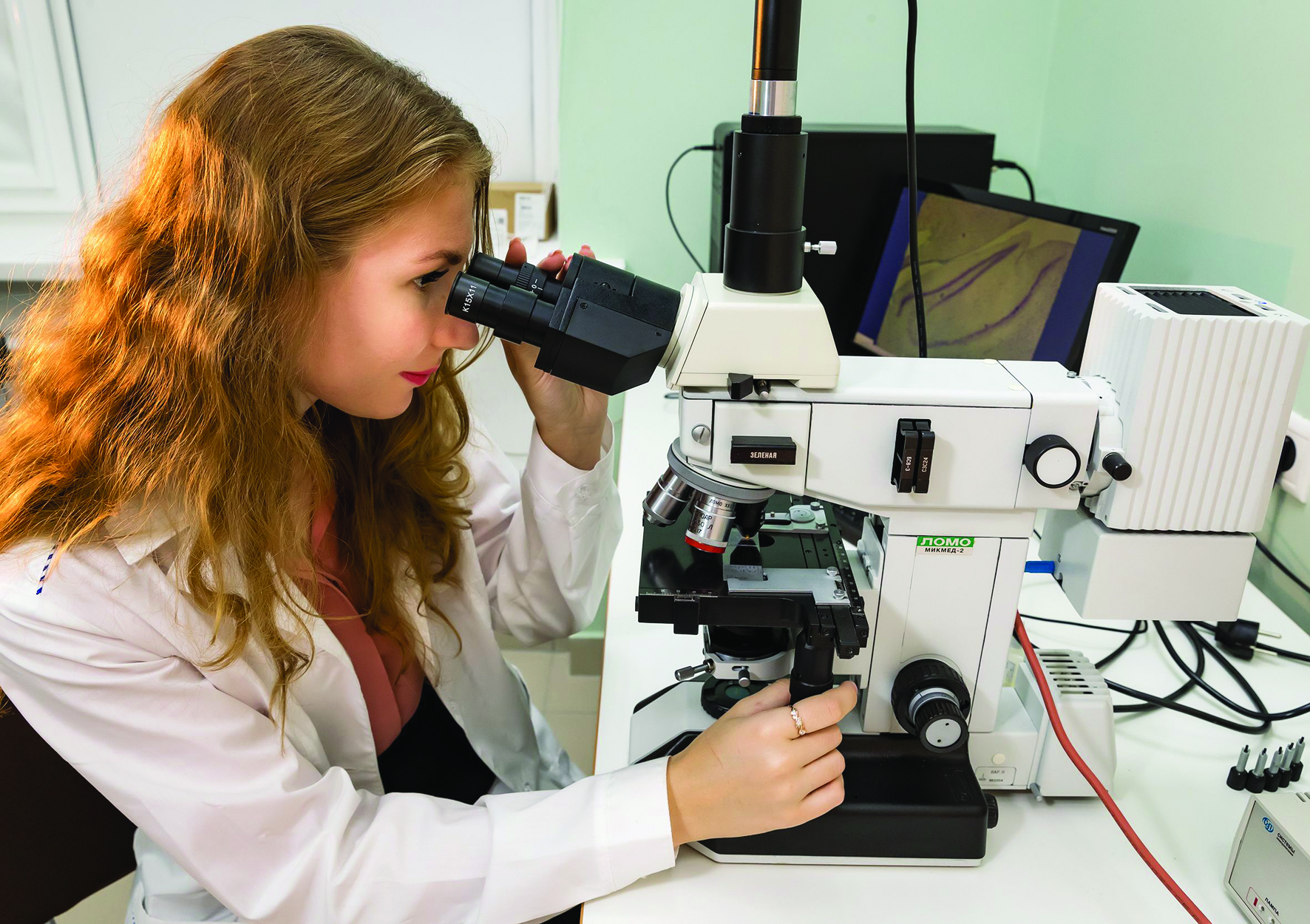When friends and colleagues help implement the idea
News, 10 July 2020
An opportunity to use machine learning methods for solving the tasks of radiobiological experiments was considered by I. A. Kolesnikova since she was a student. When Inna started working at JINR, this idea was implemented in the joint LIT-LRB project on the development of an information system solving the tasks set by radiobiologists.
Inna, a junior researcher in the Laboratory of Radiation Biology JINR, has a Bachelor’s and Master’s degrees after graduating from the Department of Biophysics of the University “Dubna” (supervisor of graduation projects is E. A. Krasavin). Now, she is a third-year postgraduate student of the Department “Radiobiology”. In 2019, she graduated from the Institute of System Analysis of our University and acquired a Master’s degree in applied computer science. The editorial board of the JINR Weekly Newspaper asked Inna Alexandrovna to tell about the joint project.
In 2017, after obtaining the Master’s degree at the Department of Biophysics, I was lucky enough to receive an invitation to continue activities in LRB as a junior researcher. I study and master the basics of laboratory and histological techniques as well as modern methods of the morphological analysis of the Central Nervous System (CNS) while working. Delving into the details and nuances of research in our field, I realized that it is a time-consuming process. Collecting biological material, its fixing and preparation of specimens, colouring and analysis may take several months. And if the preparation of specimens may take about a couple of weeks, then the analysis of histological samples is a routine long process. Moreover, many things have to be mastered on the go, in my case, for example, this thing is the basics of pathogistology and neurogistology. I started with studying the brain, I delved into studying its particular structures in the frames of graduate projects. It is necessary to study medical textbooks, manuals and even visit lectures at leading medical universities, and this is very exciting. And, of course, professional contacts obtained at business trips to conferences help in it.
Observing world achievements and great popularity of the application of artificial neural networks in various fields, I thought that it would be nice to automate the recognition of brain cells. Without education in IT, thanks to the support of parents, I got another higher education. Studying full-time at the Department of Biophysics and then during post-graduate education, I studied the ISA Master programme at the same time. Supervisor A. N. Averkin positively met my idea of trying to automate microslide analysis. However, as I was delving into the subtleties of the issue, I got to realize that the solution was not trivial. And if at the beginning of the graduation project it was planned to automate the brain cell analysis using artificial neural networks, then in the course of the study, the work focused on the preparation of data for further training of the convolutional neural network. Thanks to my friends, I learnt the Python programming language. By the way, it became absolutely clear that data preparation is a difficult and important task when I worked with LIT specialists in the fields of computer vision. The graduation project was successfully defended in February 2019.
In the autumn of last year, I met O. I. Streltsova at the DLNP site who taught us advanced mathematics at the University. She got very interested in my idea. Thus, a working meeting of employees of two groups was organized. The LIT team visited our building No.71, delved into all the details of biological research, the visitors assessed our tasks and their opportunities. After that, the Directorate received a question about cooperation. So, joint work began. It is a pleasure to work with the LIT team. Colleagues have come to us several times to get acquainted with the processes for which they are developing the system.
This is how the idea has grown into the real project we have been working on since the last autumn. A prototype of the information system has been developed on the basis of the heterogeneous platform “HybriLIT”. Tasks of automation of the analysis of photo and video materials are being solved using the methods of machine and deep learning as well as neural network algorithms. First results have been obtained in the selection of neural network architecture and training convolutional neural network U-net. The latter allows identifying brain cells using marked photos of microslides. A software component is being developed to extend the functionality of automated processing of video materials using computer vision algorithms. Young LIT employees, students of the University “Dubna”, successfully presented first results at the annual conference of students, postgraduates and young-career specialists of the University. A master dissertation was defended on the results of the use of a neural network for the morphological analysis of CNS cells after irradiation. An application for the RSF grant was submitted, and a joint seminar was held.
In conclusion, I express my gratitude to Natalia Nikolaevna Budennaya, a specialist in the fields of radibiology, phisiology, patho and neurogistology, a supervisor of my bachelor and master dissertations, for teaching me the basics of the morphological analysis, her responsiveness and readiness to give advice in solving non-trivial cases, her assistance in preparing images of gistological samples for automation of the morphological stage of the analysis. I also express gratitude to Oksana Ivanovna Streltsova for support of the idea and its implementation in the joint interesting project.
